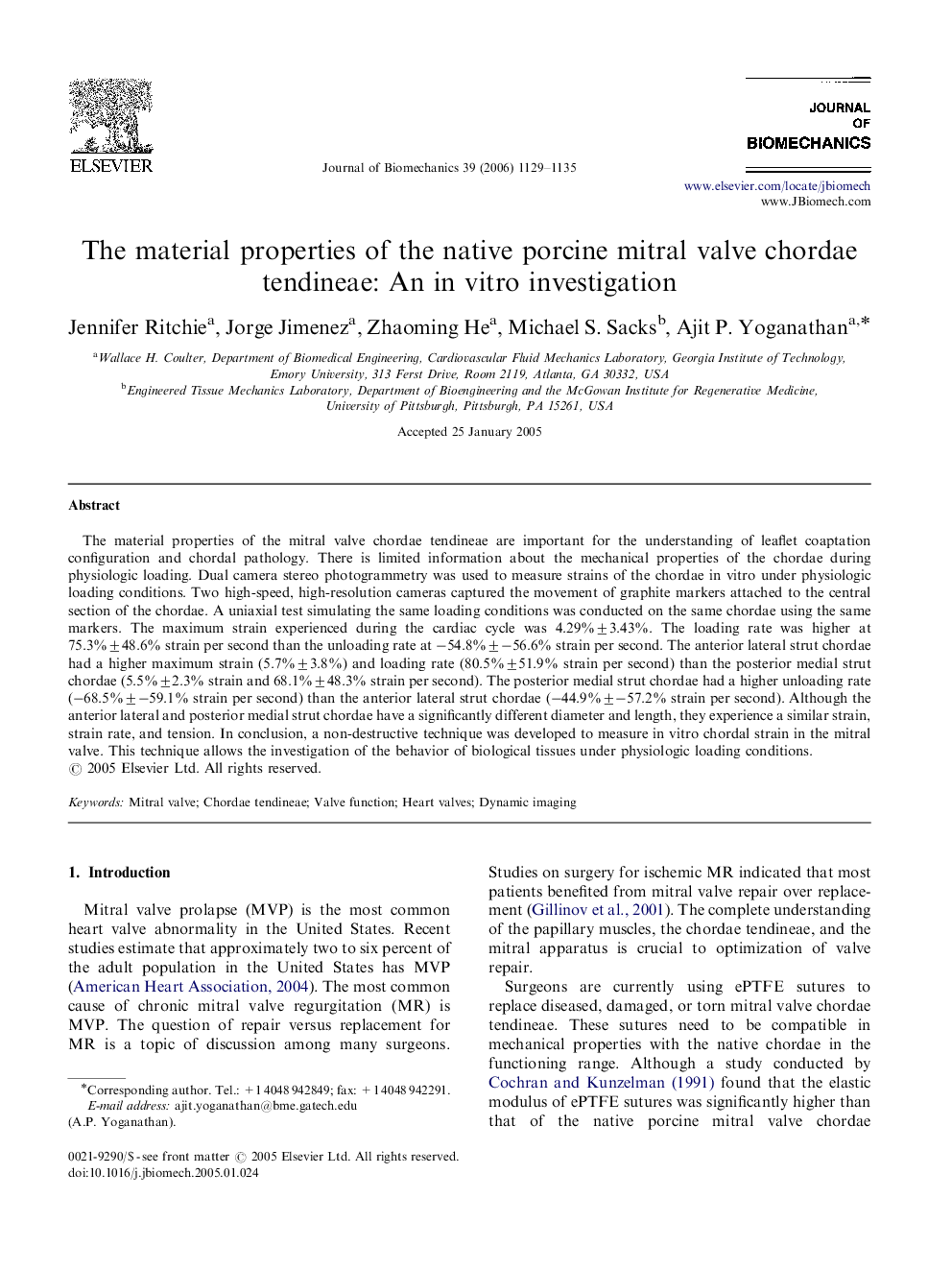| Article ID | Journal | Published Year | Pages | File Type |
|---|---|---|---|---|
| 874912 | Journal of Biomechanics | 2006 | 7 Pages |
The material properties of the mitral valve chordae tendineae are important for the understanding of leaflet coaptation configuration and chordal pathology. There is limited information about the mechanical properties of the chordae during physiologic loading. Dual camera stereo photogrammetry was used to measure strains of the chordae in vitro under physiologic loading conditions. Two high-speed, high-resolution cameras captured the movement of graphite markers attached to the central section of the chordae. A uniaxial test simulating the same loading conditions was conducted on the same chordae using the same markers. The maximum strain experienced during the cardiac cycle was 4.29%±3.43%. The loading rate was higher at 75.3%±48.6% strain per second than the unloading rate at −54.8%±−56.6% strain per second. The anterior lateral strut chordae had a higher maximum strain (5.7%±3.8%) and loading rate (80.5%±51.9% strain per second) than the posterior medial strut chordae (5.5%±2.3% strain and 68.1%±48.3% strain per second). The posterior medial strut chordae had a higher unloading rate (−68.5%±−59.1% strain per second) than the anterior lateral strut chordae (−44.9%±−57.2% strain per second). Although the anterior lateral and posterior medial strut chordae have a significantly different diameter and length, they experience a similar strain, strain rate, and tension. In conclusion, a non-destructive technique was developed to measure in vitro chordal strain in the mitral valve. This technique allows the investigation of the behavior of biological tissues under physiologic loading conditions.
